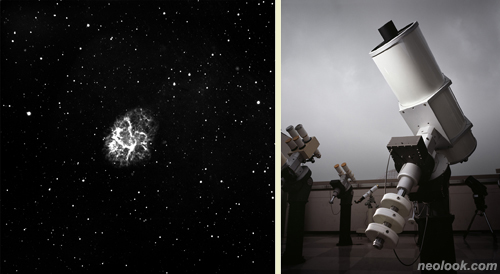- ● homepage
- ● archives
- ● restoration
- ● books
- ● big banners
- ● post board
- ■ neo's search
- ■ about us
- ■ 게재방법 안내
- 개인정보처리방침

- [email protected]
- Tel. 02_335_7922
- Fax. 02_335_7929
- 10:00am~04:30pm
- 월요일~금요일
- 3/3(월) 대체공휴일

사진은 학자의 망막 The photography is the retina of scholars
전명은展 / CHUN EUN / 全明恩 / photography 2014_0212 ▶ 2014_0219
● 위 이미지를 클릭하면 네오룩 아카이브 Vol.20131213j | 전명은展으로 갑니다.
초대일시 / 2014_0212_수요일_05:00pm
관람시간 / 10:00am~07:30pm
유스퀘어 금호갤러리 U-SQUARE CULTURAL CENTER KUMHO GALLERY 광주광역시 서구 광천동 49-1번지 유스퀘어 문화관 2,3관 Tel. +82.62.360.8436 www.usquareculture.co.kr
인간은 사진을 통해 더 멀리, 더 가까이, 그리고 "모든" 것을 보고자 하는 욕망을 구현해왔다. 사진의 역사는 보이지 않는 것을 보고자 했던 욕망의 역사이기도 하다. 사진의 혁신은 사라지는 시간의 자취를 가시화시키고, 나아가 육안으로 볼 수 없는 현상을 시각화시킨다는 데에 있다. 살인자가 가해자의 망막 면 위에 남은 자신의 영상을 지우기 위해 그 눈을 망가뜨리던 것과 반대로, 19세기 과학자는 망막 면 위에 남아있는 이미지를 사진 위로 옮겨보고자 했다. 이들은 두 가지를 놓쳤다. 먼저 인간 시각체계에서 이미지는 절대로 가시화되지 않는다는 점, 그리고 사진의 역할은 이미지의 가시화를 넘어, 그것의 시각화에 있다는 점이다. 망막 사진에서 우리가 볼 수 있는 것은 눈 위에 남겨진 이미지가 아니라, 시각화된 망막의 미세 혈관일 것이다. "사진은 학자의 망막이다." : 태양표면의 촬영에 성공한 천문가 쥘 잔슨(Jules Janssen)이 1888년에 남긴 이 말은, 사진이 보유한 완전히 새로운 시각 세계에 대한 경탄을 함축하고 있다. 인간의 감각 세계에서는 표출되지 않던 그것은, 마술이 아니라 감추어져 있던 현실이었다.

- 전명은_사진은 학자의 망막-송재원, 태양스펙트럼_아카이벌 피그먼트 프린트_90×295cm_2011~2

- 전명은_사진은 학자의 망막-박성혁(국립과천과학관), 게성운_아카이벌 피그먼트 프린트_90×165cm_2011~2

- 전명은_사진은 학자의 망막-황상권, 개기월식_아카이벌 피그먼트 프린트_90×150cm_2011~2
불완전한 인간의 눈을 보완하기 위해 고안된 광학기기들은 보기 위한 도구이지만, 또한 그 자체로 바라보는 대상이 될 수도 있다. 사진보다 카메라를 바라보는 즐거움은, 여행보다도 머리맡에 붙여놓은 지도를 바라보는 즐거움에 비할만하다. "거기"에 있는 순간보다도, 그것을 상상하거나 욕망하는 순간을 즐기는 이들은 탐험가라기보다, 몽상가이다. 같은 맥락에서, 광학기기가 매력적인 까닭은 그것이 보고자 하는 욕망을 실현하기 때문이기 이전에, 보고자 하는 욕망을 온몸으로 표현하고 있기 때문이다. ■ 전명은

- 전명은_금성망막면통과_아카이벌 피그먼트 프린트_38×35cm_2012

- 전명은_금성망막면통과_아카이벌 피그먼트 프린트_35×38cm_2012
We have fulfilled our desire to observe "everything" near and far through photography. The history of photography is also the history of our desire to make the invisible visible. Photography made it possible to capture a trace of a disappearing time and also to visualise phenomena that can't be seen by the naked eye. Murderers used to damage the eyes of victims in an attempt to erase their likeness form their victims retinas. Conversely, scientists in the 19th century endeavoured to transfer images from the retina onto photographic plates. However, both their hypotheses had two major errors. First, images can't be made visible in our visual organs. Secondly, the role of photography goes beyond making objects visible. Instead, it visualises. What we see from retinal photography is not an image left on a retina but visualised capillaries on a retina. When the French astronomer Jules Janssen stated in 1988 that photography is the retina of scholars after photographing the surface of the Sun, he was celebrating a new world of vision that photography brought forward. What has been revealed in the human sense, is hidden reality rather than magic. Optical devices are viewing instruments, originally developed for enhancing the imperfection of the human optical system. These can in themselves also be objects of contemplation. The pleasure of looking at cameras rather than photographs can be compared to that of the pleasure of looking at a map, rather than the actual journey itself. Rather than being "there", the pleasure is in imagining and desiring that moment. This pleasure is for daydreamers, not explorers. Similarly, optical devices aspire to see, before they make seeing possible. ■ CHUN EUN
Vol.20140214b | 전명은展 / CHUN EUN / 全明恩 / photography

